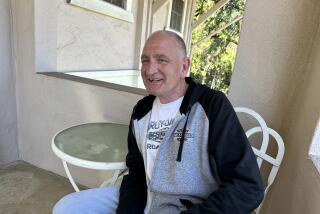‘With the war came the drugs.’ At Kabul’s Mother Camp, heroin addicts find help
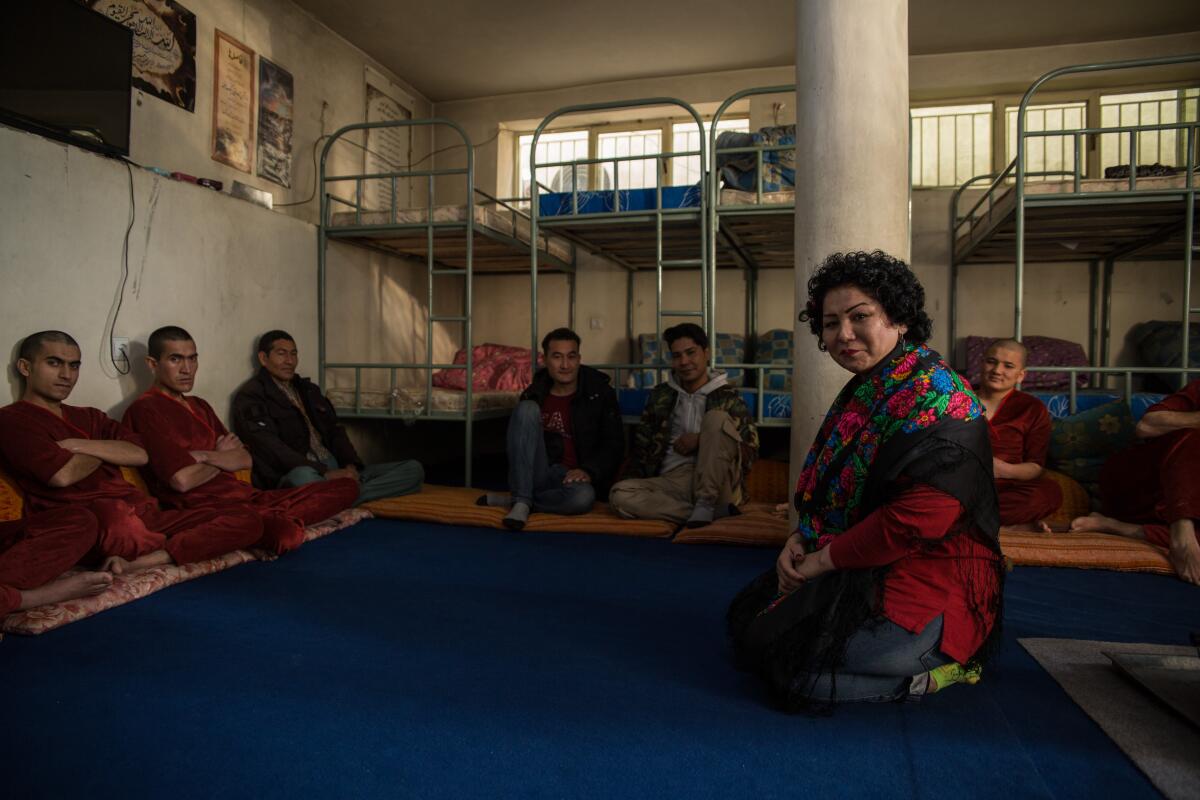
- Share via
KABUL, Afghanistan — The men sat on the floor cross-legged, dressed in red suits like prisoners, held captive by addiction. Their heads were shaved, their bodies frail. One of them was Ali, a former member of MS-13, who traded a life sentence in prison and his American passport for freedom in Afghanistan, a country he hadn’t lived in since birth.
Ali warmed his hands over a stove. His bare arms were scrawled in fading tattoos. He got into drugs as a teenager in the U.S. and veered deeper into addiction with the heroin that “ruined it all” in this war-broken land. For the past month, he’s come to Mother Camp — a private rehabilitation center that has treated more than 5,000 addicts over the last decade.
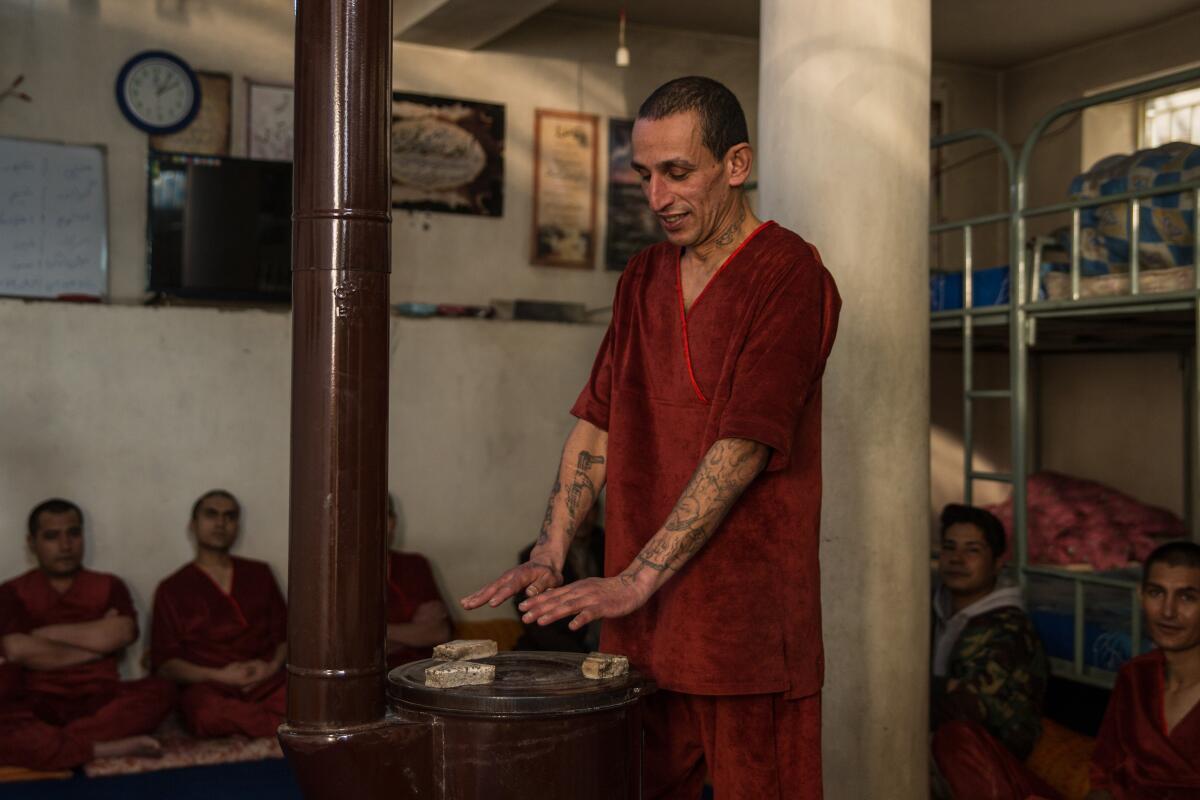
Everyone is welcome at the simple house behind iron gates at the end of a dirt road in Kabul. The shelter is run by Laila Haidri, herself a kind of outcast, who has forsaken the burka and divorced her husband. Recovering addicts adhere to a strict regime of exercise, housework and drug education. They sleep in bunk beds in a shared dorm with thick blue carpets in the basement.
“With the war came the drugs,” said Haidri, a mercurial, talkative woman who wears blue jeans and red lipstick. “People are traumatized. They go after drugs to numb their pain and to find peace. In times of conflict and terror, drugs have unfortunately become a way out for many who otherwise can’t escape.”
Wracked by decades of bloodshed and poverty, Afghanistan is a drug haven with a vast addiction problem. The country — roughly 12,000 U.S. troops are deployed here — accounts for more than 90% of the world’s opium poppy cultivation. About 375 tons of Afghan heroin enters the global market annually, according to the United Nation’s Office on Drugs and Crime.
Haidri sees daily the lives those harvests have ravaged.
“Here at Mother Camp I have learned how to live again,” said Ali.
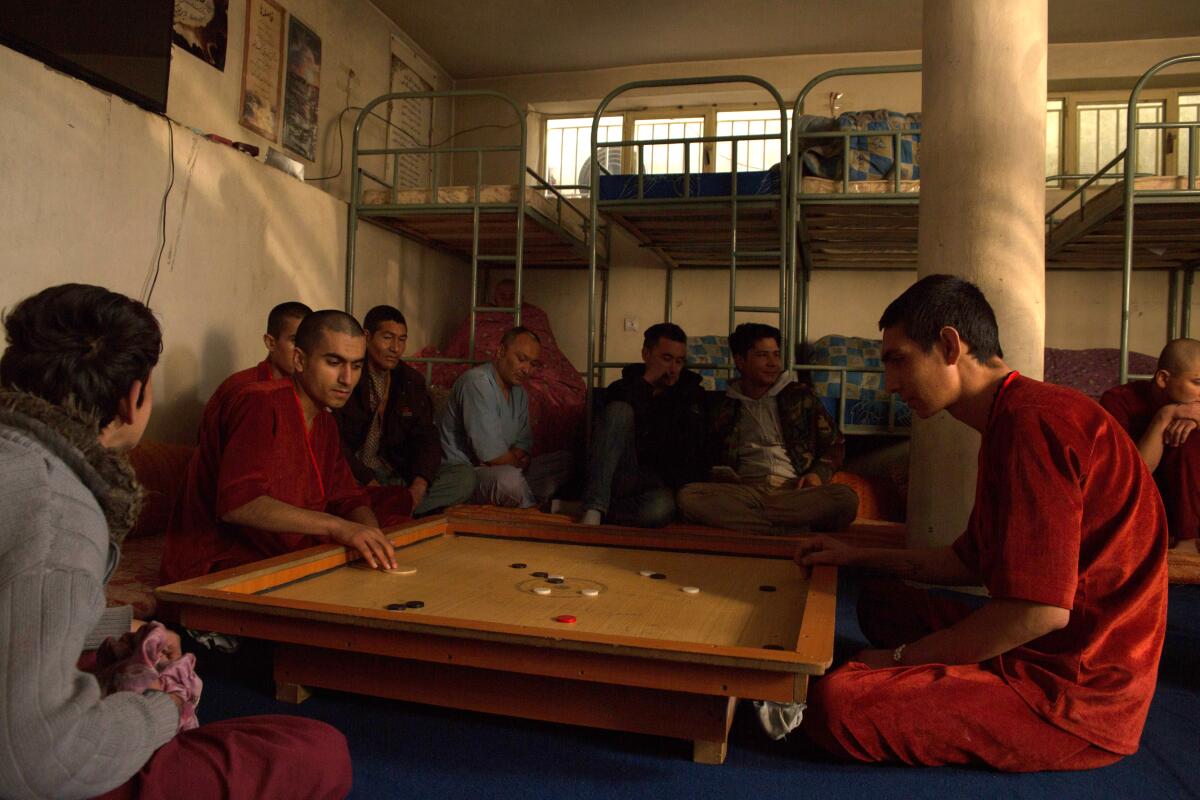
Born into upper-class Kabul society, Ali and his family escaped his native home after the Soviets invaded in 1979. The family ended up in Queens, New York, where Ali joined the MS-13 gang when he was 14. He matured into a criminal, trafficking drugs along the East Coast.
The DEA arrested him when he was 18. After spending nine years in prison, he opted to surrender his U.S. passport to avoid a life sentence. “I signed a deal to give up my citizenship and pay a restitution fee,” he said. “Several Homeland Security officials escorted me to Afghanistan. Once the plane landed, I was handed to the Afghan authorities, while the officers jumped on the next flight out.”
“I was free,” he added. “Though I quickly got involved in drugs again.”
Ali was stunned by the poverty and war in a land he had left as a child. He set up a guesthouse for international travelers, perfected his Dari — a language that he barely knew before coming to Afghanistan — and fell in love. But his business failed and his relationship crumbled. Drugs seemed like a way out of what he calls his “dark years.”
He wandered into Mother Camp one day and met Haidri. An independent woman in a nation that hews hard to tradition and patriarchy, she keeps her hair uncovered and short. She operates the center, which treats heroin, meth and opium addicts, through income from a small restaurant she runs on the side.
“I started the shelter because of my brother,” said Haidri, 40. “He was an addict, and I couldn’t bear seeing what he was going through.”
But 10 years ago, Haidri said she was “in hell” herself. She escaped an abusive marriage in Iran and, with three children in tow, returned to her native Afghanistan. It was precarious and liberating. She quickly found a foothold. “Anything was better than being raped by my husband. I couldn’t love him,” she said the other day, sitting among a group of addicts.
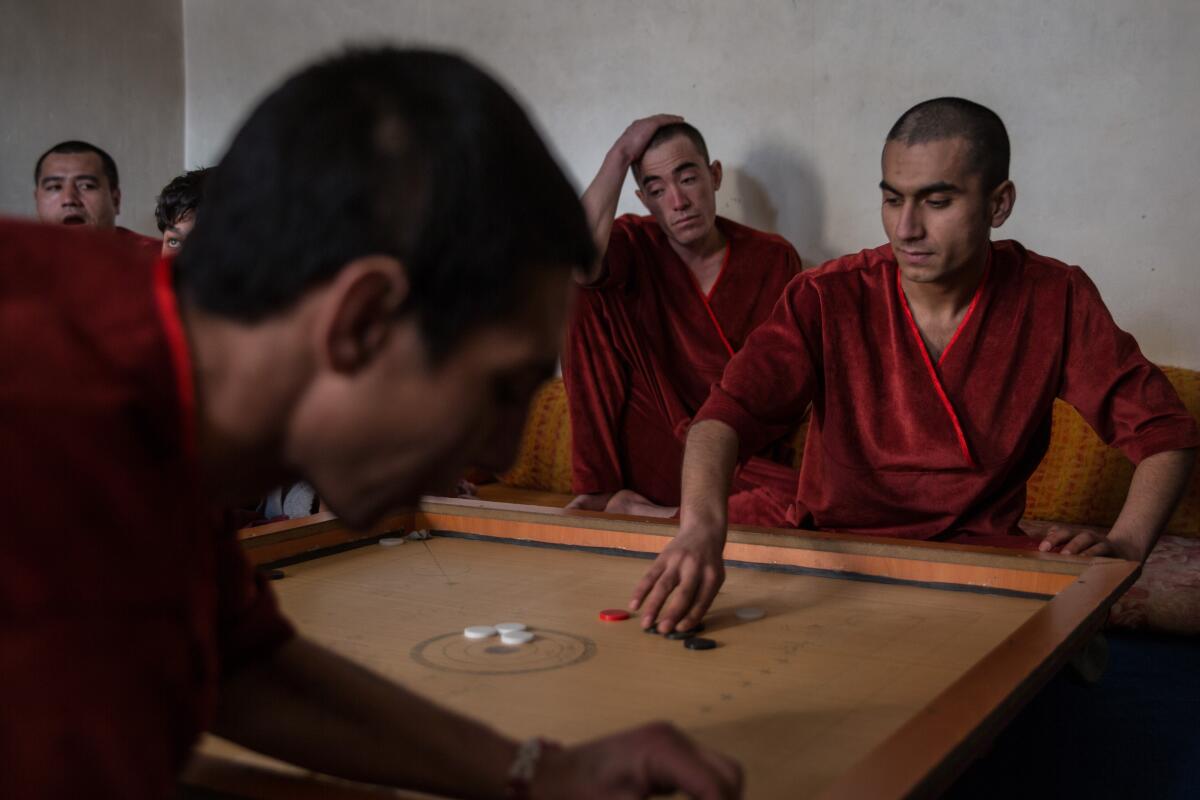
Over the years, drug addiction has been steadily on the rise, though exact numbers are difficult to come by in a country that hasn’t had a census in 40 years. Afghanistan’s National Drug Use Survey found that there are between 2.9 million and 3.6 million drug users in a country of roughly 37 million. This means that on average one in 10 people lives with an addiction — often between ages 18 and 60, but some are even younger, including children.
Drugs are cheap: a week’s dose of heroin goes for as low as 500 Afghani ($6.50); a gram of methamphetamine for 300 Afghani ($3.80).
Mother Camp accommodates about 40 people. They usually stay for a month. The majority of addicts are men, but women are welcome. Most of the staff at the center — from the cleaners to the director — are former addicts, able to relate to those who are starting detox.
While Haidri and Ali recounted their stories, warming their hands over a wood-fired oven, a new man was brought in. “I walked here,” he said, after introducing himself as 42-year-old Said. “I was desperate. I knew I needed to change.”
Running the center has not been easy. “The government has never taken the issue seriously and the money invested in rehab ends up in people’s own pockets in a corrupt process,” said Haidri. “Personally, it’s been equally hard. I receive threats and insults. Some people consider me to be a criminal because I work with addicts, others a prostitute. As a woman, nothing is easy in Afghanistan — and besides that, Kabul is still a violent, dangerous city.”
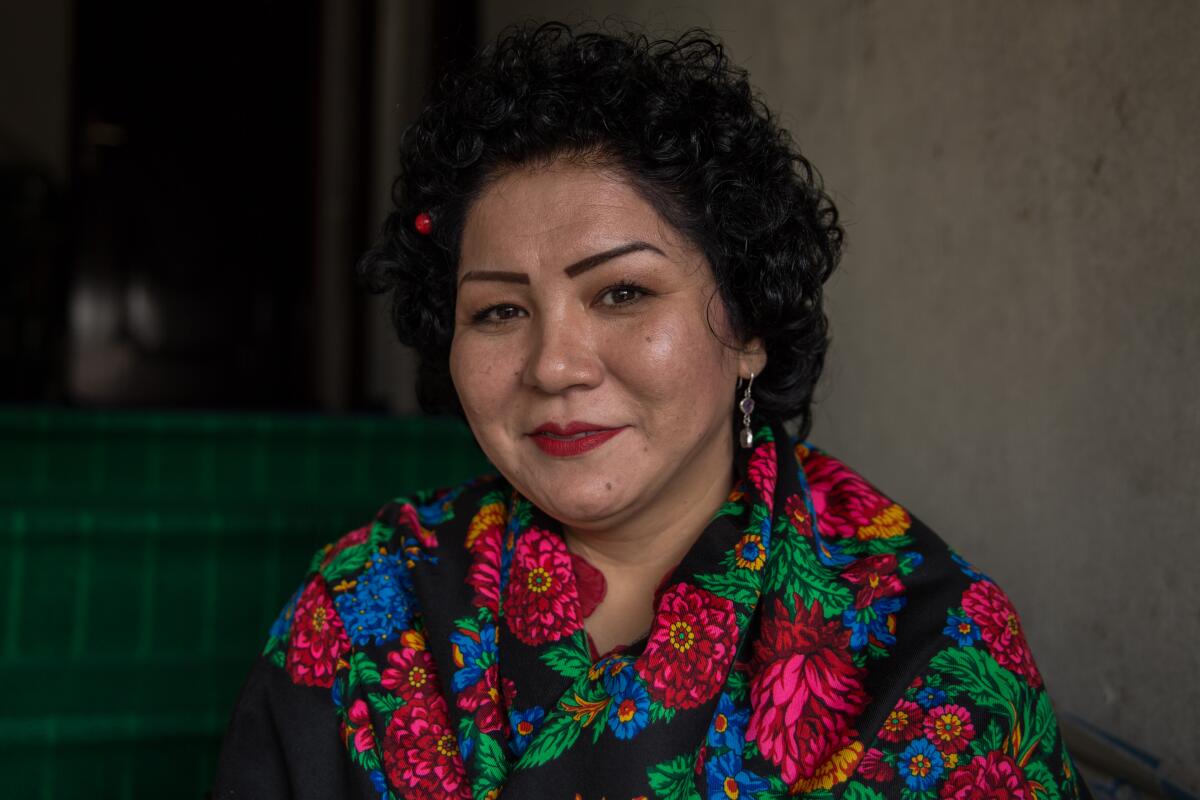
All three of Haidri’s children left for Germany five years ago, after Afghanistan’s last presidential election. They joined the wave of refugees flocking to Europe. She misses them but is also relieved. “There are so many young people in this country, but so few opportunities,” she said. “We lack the most basic things — like places for people to hang out such as parks and cinemas.”
The addicts, she said, have stood by her side. Haidri has never tried drugs herself, but the organization’s director, Nazim Alizada, 60, is a former addict who lost his leg in a mine explosion. He’s been clean for seven years, but it took him 37 years to get here.
“Back then I was a police officer,” he said. “The accident changed my life. Today I can relate to those who come here. I’ve been there myself.”
Haidri knows anyone can fall victim to drugs: truck drivers, government employees, mothers, deported refugees. But she holds on to one truth about Afghanistan’s capital. “This city has good energy,” she smiled. “People — especially young people — have a drive. They need positive outlets. If we can create those as an alternative to drugs, addiction will drop.”
Glinski is a Times special correspondent.
More to Read
Sign up for Essential California
The most important California stories and recommendations in your inbox every morning.
You may occasionally receive promotional content from the Los Angeles Times.


